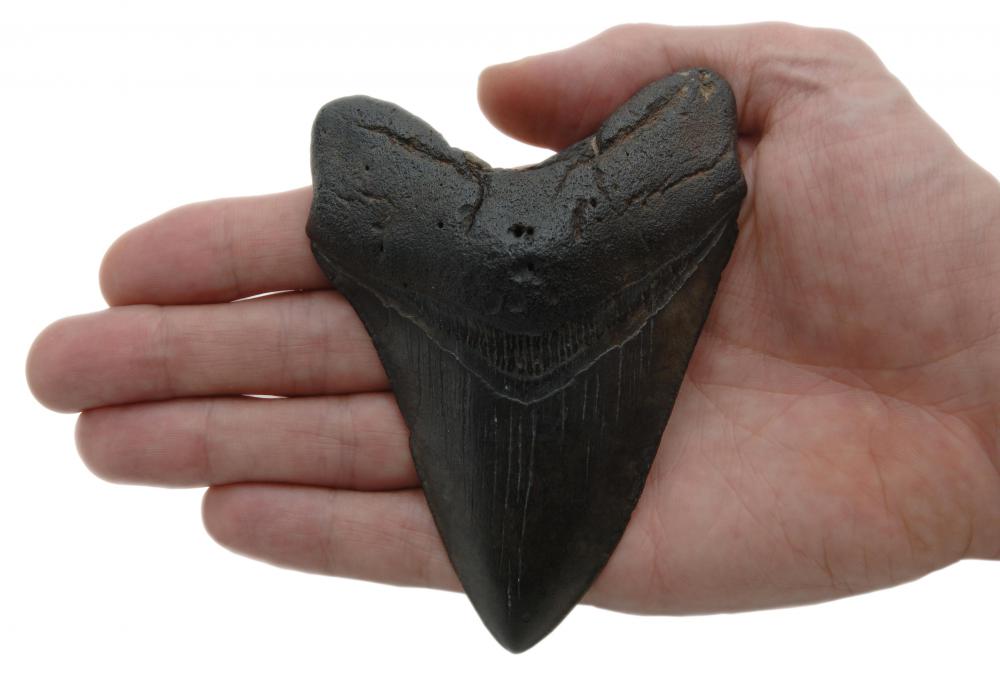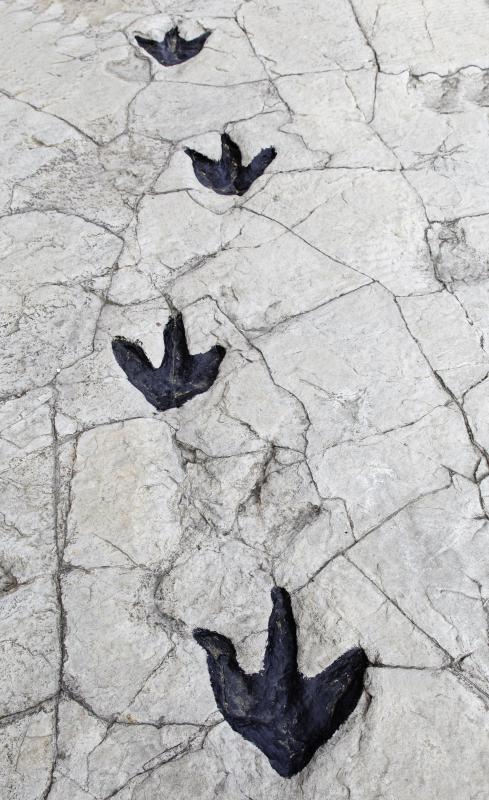What is a Fossil?
 Mary McMahon
Mary McMahon
Fossils are the traces of ancient life, and they are used to find out more about the history of life on Earth. A fossil can take a number of forms, from an imprint of an ancient footprint in volcanic ash to an organism which has been turned to stone through the process of permineralization. You can see numerous examples of fossils on display at natural history museums, and many common fossils are also available for purchase by collectors and enthusiasts. In some areas of the world, you can also dig up your own fossils.
The word “fossil” comes from the Latin fossilis, “dug up,” a reference to the fact that most fossils must be excavated. Humans have been studying and writing about fossils since at least the time of the Ancient Greeks, when people noticed things like fossilized oceanic organisms in mountainous regions and suggested that these areas could have been underwater at some point. The collective information gathered from the millions of fossils on Earth is known as the fossil record, and the fossil record provides a number of interesting clues into what life on Earth was once like.

There are numerous gaps in the fossil record because not every organism becomes fossilized. Conditions must be absolutely perfect for the creation of a fossil; otherwise, an organism will naturally decay away, being broken down by scavengers and bacteria. Most fossils are formed because they are deposited into moist sediments where bacteria cannot survive. Fossils have been found in bogs, quicksand, clay deposits, tar pits, and volcanic ash.

In some cases, a fossil takes the form of a natural mold. Some excellent examples of natural molds were found in the Roman city of Pompeii, where a volcanic explosion killed numerous people by drowning them in ash, mud, and sediment. As the volcanic sediments cooled and hardened, they made molds which surrounded the bodies of the victims. Over time, these bodies eventually decayed, leaving imprints of themselves behind.

A fossil can also be turned to stone if conditions are right. In these cases, highly mineralized water fills up the empty spaces in an organism, and the minerals slowly concentrate, recording the organism's form in stone. This is fairly rare. Many deep sea organisms were fossilized in this way, as they fell to the bottom of the ocean and were buried in sediment.

Commonly fossils are formed from the parts of an animal which are mineralized while the animal is alive, such as bones and teeth. These mineralized body parts are preserved by ideal natural conditions while the flesh decays, leaving behind a skeletal record of an animal that once was. More rarely, complete animals are preserved in ice, as is the case with some Pliocene animals like mammoths.
AS FEATURED ON:
AS FEATURED ON:


















Discussion Comments
where in south africa do you find fossils?
If one were to find a fossil organism what could you learn from the fossil's past?
How did the fossil get here? Who created the fossils?
Awesome info dude(s)! Just what i needed 4 study info. im going to use this site more often!
Post your comments